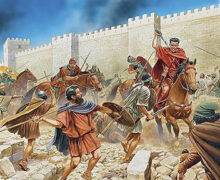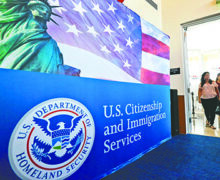“Slavery, Civil War and Staten Island”
For four hundred years the saga of White/Black conflict has permeated race in America. African slaves bought and sold by White Dutch, English and Spanish men — to civil war, to Jim Crow racial fascism, to legal equality springing from the Halls of Congress, all this has racked America and its national psyche day in and day out for 400 years.
The saga has at once been depressing and exhilarating, it has reflected the country’s psychological, economic and political condition.
Alabama police and their dogs attacked American flag-carrying Black children. Offensive fat segregationists like Alabama Sheriff “Bull” Connor ordered armed men to attack defenseless Americans.
The attacks on Blacks were depressing because people asked themselves, how could this happen in the greatest and most powerful nation on Earth; joyous because television witnesses of this and similar events used what they witnessed to construct a new moral and legal paradigm in America that resulted in the Civil and Voting Rights Acts of 1964-65.
Starting with President Eisenhower using federal troops to integrate Little Rock, Arkansas schools at bayonet point to Richard Nixon’s grand achievements of school integration that President Kennedy and Johnson forgot to implement, to Black men, women and children entering schools, they overcame previous college quota systems designed to use Black athletes only and they registered to vote.
The courts invalidated deed restrictions that prohibited Blacks from buying residential property throughout the United States and eliminated discriminatory government-aided programs so they could buy houses everywhere.
I recall driving by a WWII housing project in the early Sixties in San Diego that was built to accommodate defense workers and military families when the government put the project up for sale, one house at a time for $4,000 each with government mortgage programs available to buyers with three percent, 30 year loans. Hundreds of people were lined up to buy. Residents had first right. Most were Blacks who had never owned a house. It was a good moment.
Black America was a million miles away from 1619 when the first Blacks were brought here in chains to be sold as slaves. Black America was on its way.
Lying under this veneer of progress and the New Paradigm, however, was a widespread mentality, hidden as it was, of bigotry and hate pervasive in the US after Confederate Hero General Nathan Bedford Forest founded the violent Ku Klux Klan and unleashed his White Southern gentleman on a hundred-year-long career of murder and mayhem.
Reacting to this underlying hate and bigotry is a recent Black reaction manifested in what Black Democrat Congresswoman called an “uprising” in describing the Los Angeles race riot of 1992. Prior to 1943, all race riots in the United States, including the Irish riot in 1863 in New York, were Whites against Blacks with entire Black towns wiped out by White murdering rioters (in Oklahoma and Florida, for example) and hundreds if not thousands of Black men murdered and hung from trees like Christmas ornaments, Blacks didn’t retaliate until 1943.
The 1943 Black riot in Detroit started Black warfare in Watts, Los Angeles and riots on U.S. Navy ships during the Vietnam War. Oakland, California now joins those inglorious riots resulting, in this case, from rage over a grand jury decision about the death or Eric Garner thousands of miles away.
The 400-year-long racial dispute continues. It does not, however, appear to be a dominate factor in the growth and acceptance of America’s 54-million-strong Hispanic community.
Dr. Thomas Sowell wrote in his “ETHNIC AMERICA,” no group in America has made as much social, economic, educational and political progress as have Hispanics.
From a 1920s agricultural society, he wrote, reordered as it was by World War Two and the participation of hundreds of thousands of Hispanic soldiers, sailors and Marines in it, a tiny Hispanic American population changed dramatically.
The GI Education bill paid for college for men who never dreamed of college, Hispanic America burst free from its agricultural attachments and island isolation into an America enlightened by the Black experience. It had freed Blacks from the state-imposed Jim Crow segregationist status most Blacks observed at the point of a “Bull” Connor gun.
College educated Hispanic combat veterans proliferated school faculties, many entered professions and jobs restricted before the war, their natural talents at carpentry turned some into construction workers who graduated to real estate developers.
Few recognized what was coming, so many were surprised when Hispanics sped by the Black population in numbers, in college matriculation, in business formation and in a wide ranging presence that even blooms in the Deep South.
Hispanics gained much during the Black struggle. The benefits must be recognized by Hispanics with proper credit to the Blacks who worked so hard to overcome barriers unlike anything Hispanics have endured.
To me, supporting Blacks in their continuing struggle honors those little Black children attacked with police dogs and cattle prods in Alabama 50 years ago. As much as any U.S. Marine at Iwo Jima, those little Black children fought for me and my rights. Thanks.
Contreras formerly wrote for the New American News Service of the New York Times

























